Prince Harry recently opened up about his journey with post-traumatic stress disorder following the loss of his mother, Princess Diana. In a candid discussion, he revealed his exploration of a groundbreaking therapy that helped him.
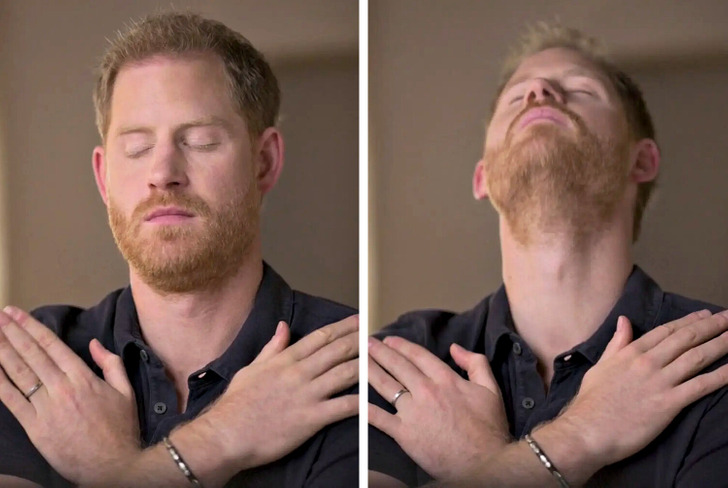
The therapy is called eye movement desensitization and reprocessing (EMDR) to address the debilitating effects of his anxiety attacks. This revelation offers a glimpse into the royal’s personal struggles and his proactive approach towards mental health care, shedding light on the significance of seeking innovative treatments of traumas.
In a video, Prince Harry can be seen undergoing EMDR therapy, where he taps his shoulders and moves his eyes rapidly. This therapy is relatively new and is used to treat PTSD. Prince Harry shared that he decided to try EMDR to deal with severe anxiety attacks he was experiencing.
Prince Harry mentioned that he was open to trying EMDR because of the therapy and work he had done over the years.
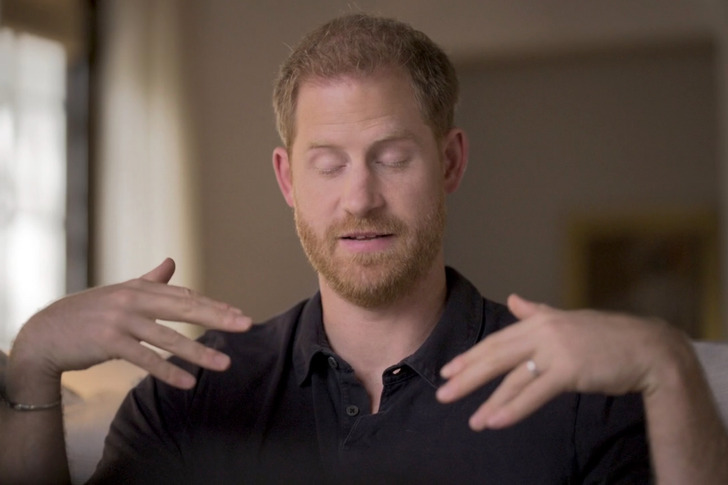
During a therapy session with UK-based psychotherapist Sanja Oakley, Prince Harry demonstrated how EMDR helped him feel better about returning home. He described feeling scared and helpless before, but the therapy helped him cope with those feelings.
Prince Harry’s openness about his experience with EMDR therapy sheds light on alternative treatments for post-traumatic disorder and mental health struggles. It shows that seeking help and trying different therapies can make a difference in managing mental health conditions.
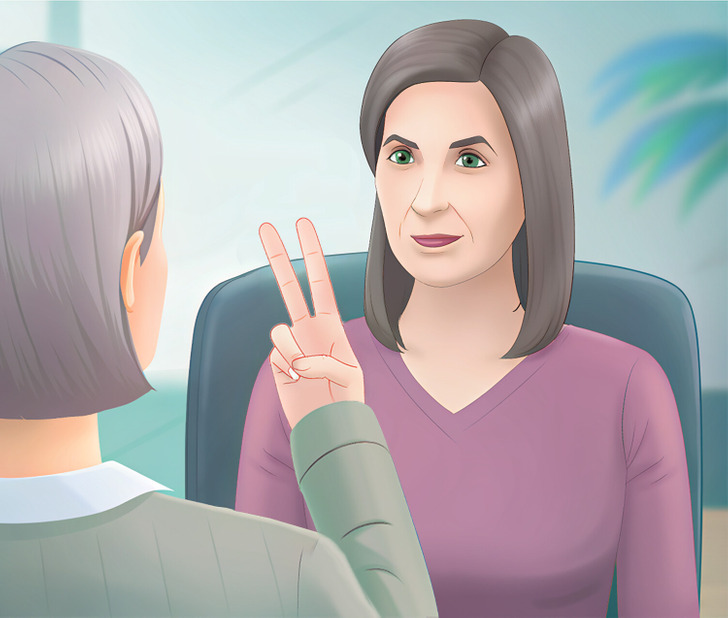
EMDR is a therapy made in 1987 to help with emotional traumas. It’s a structured therapy where you think about a tough memory while moving your eyes back and forth. This helps lessen the strong feelings tied to the memory.
EMDR works on a theory called Adaptive Information Processing (AIP). It says that trauma sticks around because it hasn’t been dealt with properly. So, when something reminds you of the trauma, those memories can come back strongly.
Unlike other therapies that try to lessen your reaction to trauma, EMDR tries to change how your brain stores those tough memories. Sometimes, instead of eye movements, you might listen to alternating tones. Usually, EMDR happens once or twice a week for about six to 12 sessions. But it can vary depending on the person.
Benefits of EMDR therapy
- EMDR is a structured therapy and usually needs fewer sessions than ongoing therapies.
- You don’t have to keep going back to the tough memory for a long time.
- You don’t have to talk a lot about what happened to you.
- There’s no homework to do.
- EMDR doesn’t try to change your thoughts and beliefs.
Disadvantages of EMDR therapy
- While EMDR is known to help with PTSD, it hasn’t been studied as much for other mood or mental health problems.
- If you’re avoiding talking about a tough event, EMDR might not be the best choice. Other types of talk therapy might work better.
- EMDR can sometimes make you feel worse at the start of treatment. The person who created EMDR warns that this could be dangerous for people who have gone through really tough things.
The process of EMDR
EMDR is a structured process with eight phases, each aimed at helping you deal with traumatic memories:
- History taking: Discuss your past with the therapist to identify which memories to focus on.
- Preparation: Learn about EMDR and how the therapist will use bilateral stimulation.
- Assessment: Identify your negative and positive beliefs related to the trauma.
- Desensitization: Use bilateral stimulation while recalling the memory.
- Installation: Focus on positive beliefs while processing the memory.
- Body scan: Talk about how you feel emotionally and physically.
- Closure: Prepare for what may happen between sessions.
- Reevaluation: Assess your progress and decide if more sessions are needed.
As you go through EMDR, you may start feeling less overwhelmed by the trauma. It’s normal for other painful memories to surface, indicating that suppressed memories are being processed.
When grappling with deep emotional traumas, it’s crucial to seek out specialists who can provide the appropriate form of treatment tailored to your needs. Whether it’s EMDR therapy or other therapeutic approaches, finding the right professional can make a significant difference in your healing journey.
Preview photo credit Good Morning America / YouTube
Casei-me com um sem-abrigo para contrariar os meus pais – Um mês depois, cheguei a casa e fiquei paralisada de choque com o que vi

Quando me ofereci para me casar com um estranho sem-teto, pensei que tinha tudo planejado. Parecia o arranjo perfeito para agradar meus pais sem amarras. Mal sabia eu que ficaria chocada ao entrar em minha casa um mês depois.
Sou Miley, tenho 34 anos, e esta é a história de como deixei de ser uma mulher solteira e feliz, com uma carreira profissional, para me casar com um morador de rua, apenas para ver meu mundo virar de cabeça para baixo da maneira mais inesperada.

Uma mulher em seu quarto | Fonte: Midjourney
Meus pais estão no meu pé para me casar desde que me lembro. Sinto como se eles tivessem um cronômetro correndo em suas cabeças, contando os segundos até que meu cabelo comece a ficar branco.
Como resultado, cada jantar em família se transformava em uma sessão improvisada de encontros.
“Miley, querida”, minha mãe, Martha, começava. “Você se lembra do filho dos Johnsons? Ele acabou de ser promovido a gerente regional na empresa dele. Talvez vocês dois devessem tomar um café qualquer dia?”
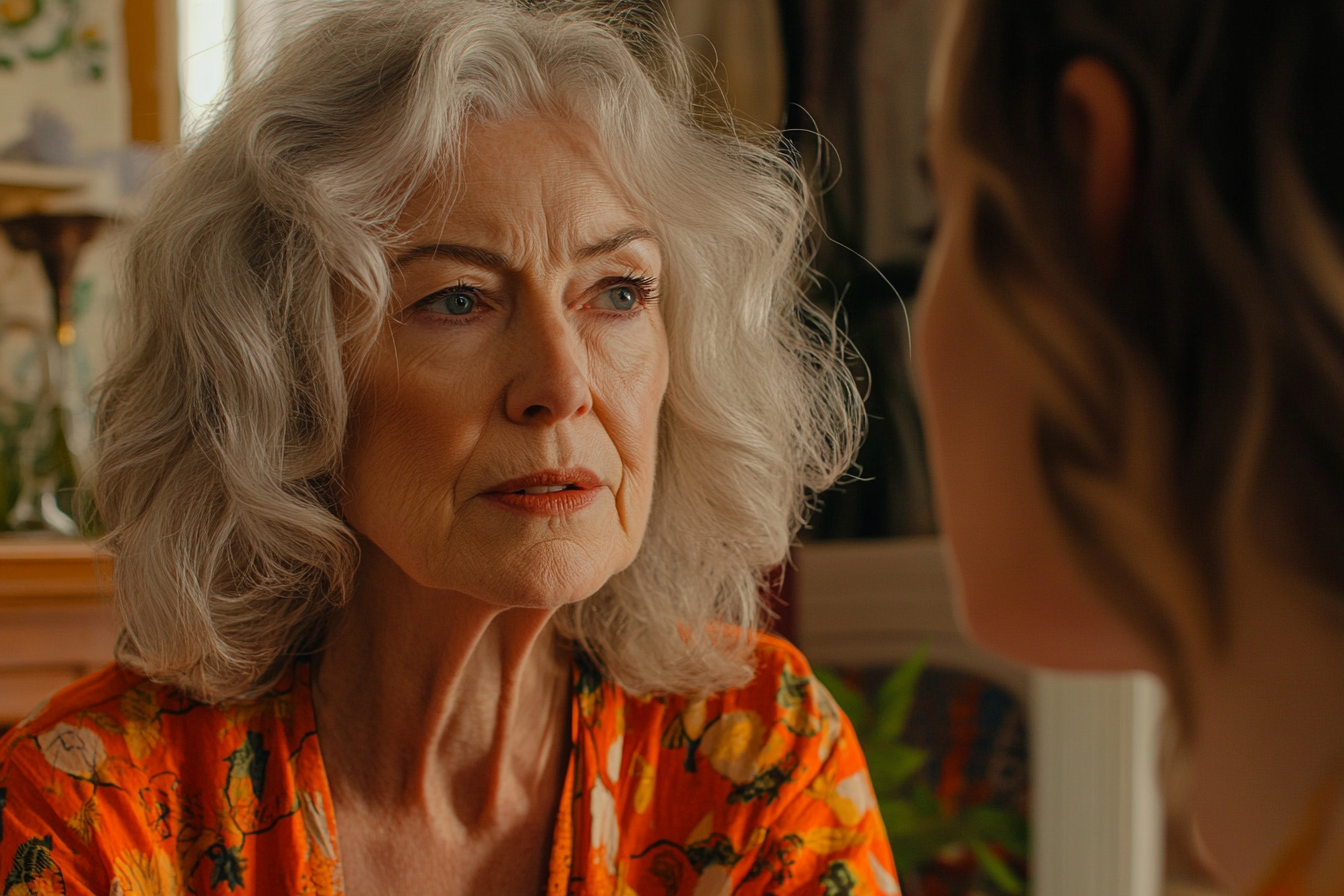
Uma mulher conversando com sua filha | Fonte: Midjourney
“Mãe, não estou interessado em namorar agora”, eu dizia. “Estou focado na minha carreira.”
“Mas, querida”, meu pai, Stephen, intervinha, “sua carreira não vai te manter aquecida à noite. Você não quer alguém para compartilhar sua vida?”
“Eu compartilho minha vida com vocês e meus amigos”, eu retrucava. “Isso é o suficiente para mim agora.”
Mas eles não desistiram. Era uma enxurrada constante de “E o fulano?” e ”Você ouviu falar desse rapaz simpático?”
Uma noite, as coisas pioraram.

Uma foto em close de cadeiras em uma casa | Fonte: Pexels
Estávamos tendo nosso habitual jantar de domingo quando meus pais soltaram uma bomba.
“Miley”, meu pai disse em um tom sério. “Sua mãe e eu estivemos pensando.”
“Nossa, aqui vamos nós”, murmurei.
“Decidimos”, ele continuou, ignorando meu sarcasmo, “que, a menos que você se case até seu 35º aniversário, não verá um centavo da nossa herança.”
“O quê?” Eu soltei. “Você não pode estar falando sério!”
“Estamos”, minha mãe entrou na conversa. “Não estamos ficando mais jovens, querida. Queremos ver você estabelecida e feliz. E queremos netos enquanto ainda somos jovens o suficiente para aproveitá-los.”

Uma mulher olhando para sua filha | Fonte: Midjourney
“Isso é loucura”, eu gaguejei. “Você não pode me chantagear para me casar!”
“Não é chantagem”, meu pai insistiu. “É, uh, é incentivo.”
Saí da casa deles naquela noite, sem conseguir acreditar no que tinha acabado de acontecer. Eles me deram um ultimato, insinuando que eu precisava encontrar um marido em alguns meses ou dar adeus à minha herança.
Fiquei bravo, mas não porque eu queria o dinheiro. Era mais sobre o princípio da coisa. Como eles ousam tentar controlar minha vida desse jeito?

Uma mulher olhando para sua mãe | Fonte: Midjourney
Por semanas, não atendi suas ligações nem os visitei. Então, uma noite, tive uma excelente ideia.
Eu estava voltando do trabalho para casa, pensando em planilhas e prazos, quando o avistei. Um homem, provavelmente com quase 30 anos, estava sentado na calçada com uma placa de papelão pedindo troco.
Ele parecia rude, tinha uma barba desgrenhada e vestia roupas sujas, mas havia algo em seus olhos. Uma gentileza e uma tristeza que me fizeram parar.
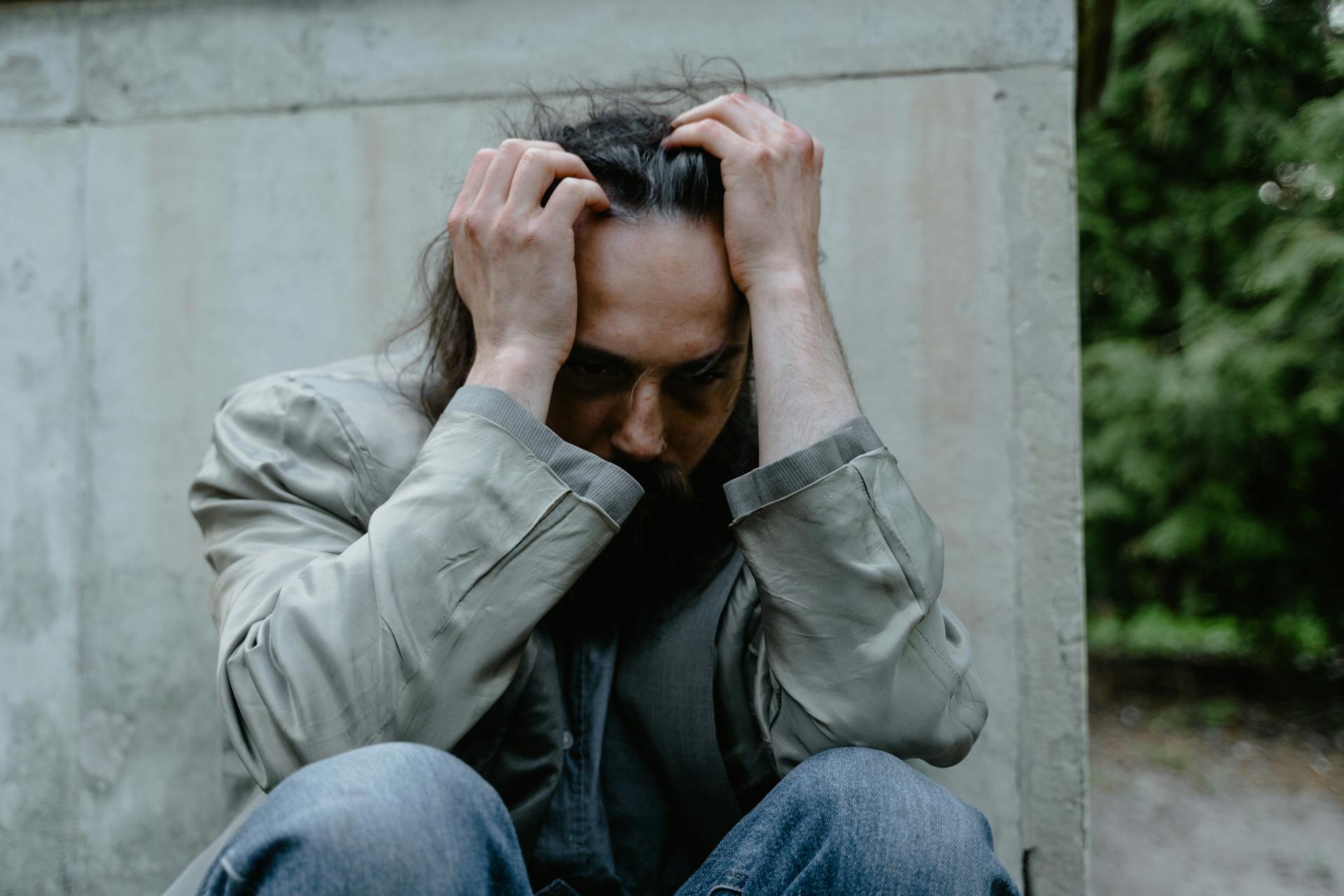
Um homem sem-teto | Fonte: Pexels
Foi quando uma ideia me ocorreu. Era uma loucura, mas parecia a solução perfeita para todos os meus problemas.
“Com licença”, eu disse ao homem. “Isso pode parecer loucura, mas, hum, você gostaria de se casar?”
Os olhos do homem se arregalaram em choque. “Desculpe, o quê?”
“Olha, eu sei que isso é estranho, mas me escute”, eu disse, respirando fundo. “Eu preciso me casar o mais rápido possível. Seria um casamento de conveniência. Eu lhe daria um lugar para morar, roupas limpas, comida e algum dinheiro. Em troca, você só teria que fingir ser meu marido. O que você diz?”
Ele me encarou pelo que pareceu uma eternidade. Eu tinha certeza de que ele pensou que eu estava brincando.

Um close-up do rosto de um homem | Fonte: Midjourney
“Moça, você está falando sério?” ele perguntou.
“Completamente”, eu o assegurei. “Eu sou Miley, a propósito.”
“Stan”, ele respondeu, ainda parecendo perplexo. “E você está mesmo se oferecendo para se casar com um cara sem-teto que você acabou de conhecer?”
Eu assenti.
“Eu sei que parece loucura, mas prometo que não sou uma serial killer nem nada. Apenas uma mulher desesperada com pais intrometidos.”
“Bem, Miley, tenho que dizer que essa é a coisa mais estranha que já aconteceu comigo.”
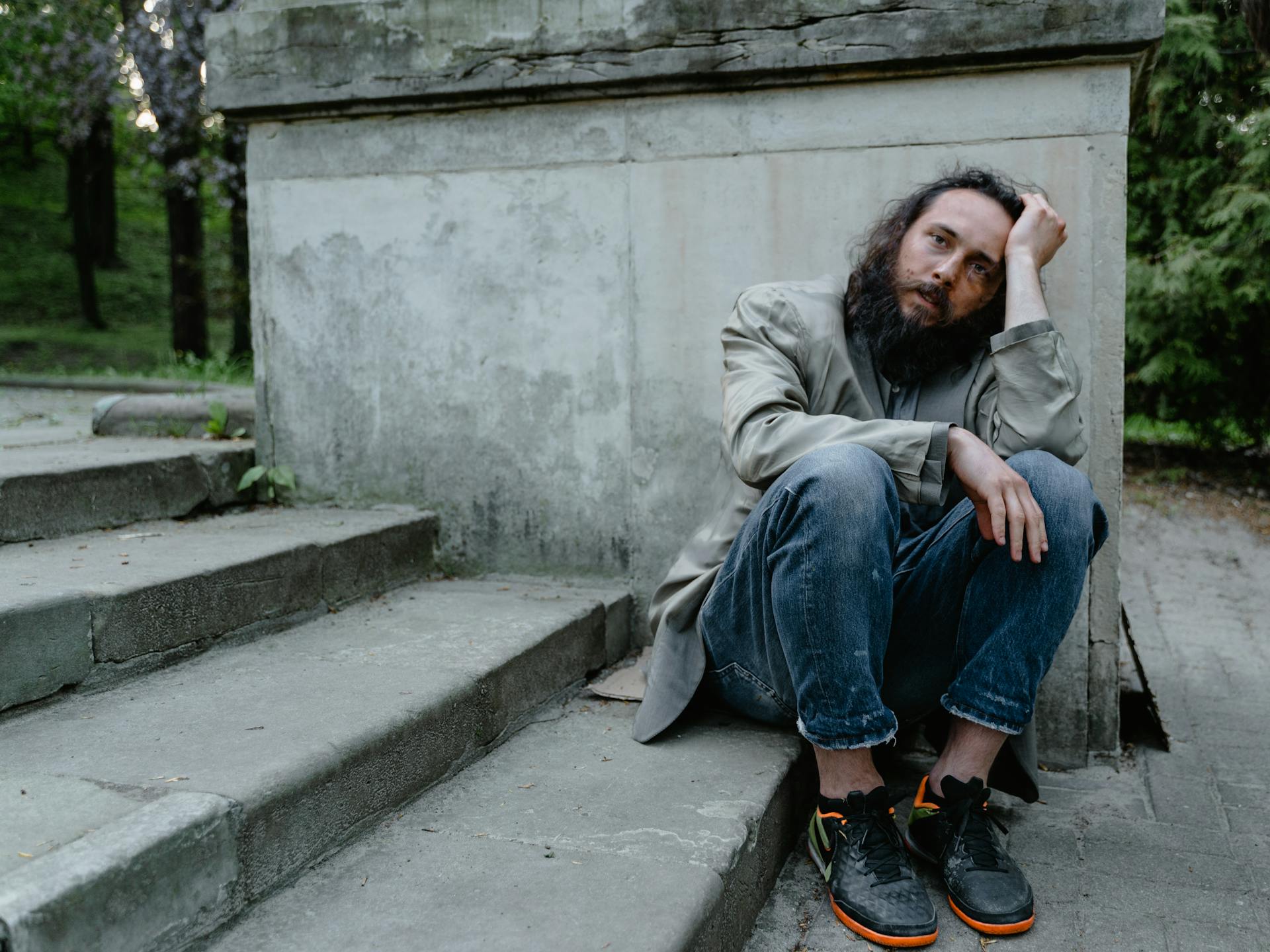
Um homem sem-teto sentado ao ar livre | Fonte: Pexels
“Então, isso é um sim?”, perguntei.
Ele olhou para mim por um longo momento, e eu vi aquela faísca em seus olhos novamente. “Sabe de uma coisa? Por que diabos não? Você tem um acordo, futura esposa.”
E assim, minha vida tomou um rumo que eu nunca poderia imaginar.
Levei Stan para comprar roupas novas, levei-o para um salão de beleza e fiquei agradavelmente surpresa ao descobrir que, por baixo de toda aquela sujeira, havia um homem muito bonito.

Um homem sorrindo | Fonte: Midjourney
Três dias depois, apresentei-o aos meus pais como meu noivo secreto. Dizer que eles ficaram chocados seria pouco.
“Miley!”, minha mãe exclamou. “Por que você não nos contou?”
“Ah, você sabe, eu queria ter certeza de que era sério antes de dizer qualquer coisa”, menti. “Mas Stan e eu estamos tão apaixonados, não estamos, querida?”
Stan, para seu crédito, tocou junto lindamente. Ele encantou meus pais com histórias inventadas sobre nosso romance relâmpago.
Um mês depois, nos casamos.

Um casal recém-casado | Fonte: Pexels
Eu me certifiquei de fazer um acordo pré-nupcial sólido, só para garantir, caso meu pequeno esquema saísse pela culatra. Mas, para minha surpresa, morar com Stan não era nada ruim.
Ele era engraçado, inteligente e sempre pronto para ajudar em casa. Nós nos tornamos amigos fáceis, quase como colegas de quarto que ocasionalmente tinham que fingir estar loucamente apaixonados.
No entanto, havia apenas uma coisa que me incomodava.

Uma mulher olhando para frente | Fonte: Midjourney
Sempre que eu perguntava a Stan sobre seu passado, sobre como ele foi parar nas ruas, ele se fechava. Seus olhos ficavam nublados, e ele rapidamente mudava de assunto. Era um mistério que me intrigava e frustrava ao mesmo tempo.
Então chegou o dia que mudou tudo.
Era um dia normal quando voltei para casa do trabalho. Quando entrei em casa, uma trilha de pétalas de rosas chamou minha atenção. Ela me levou para a sala de estar.
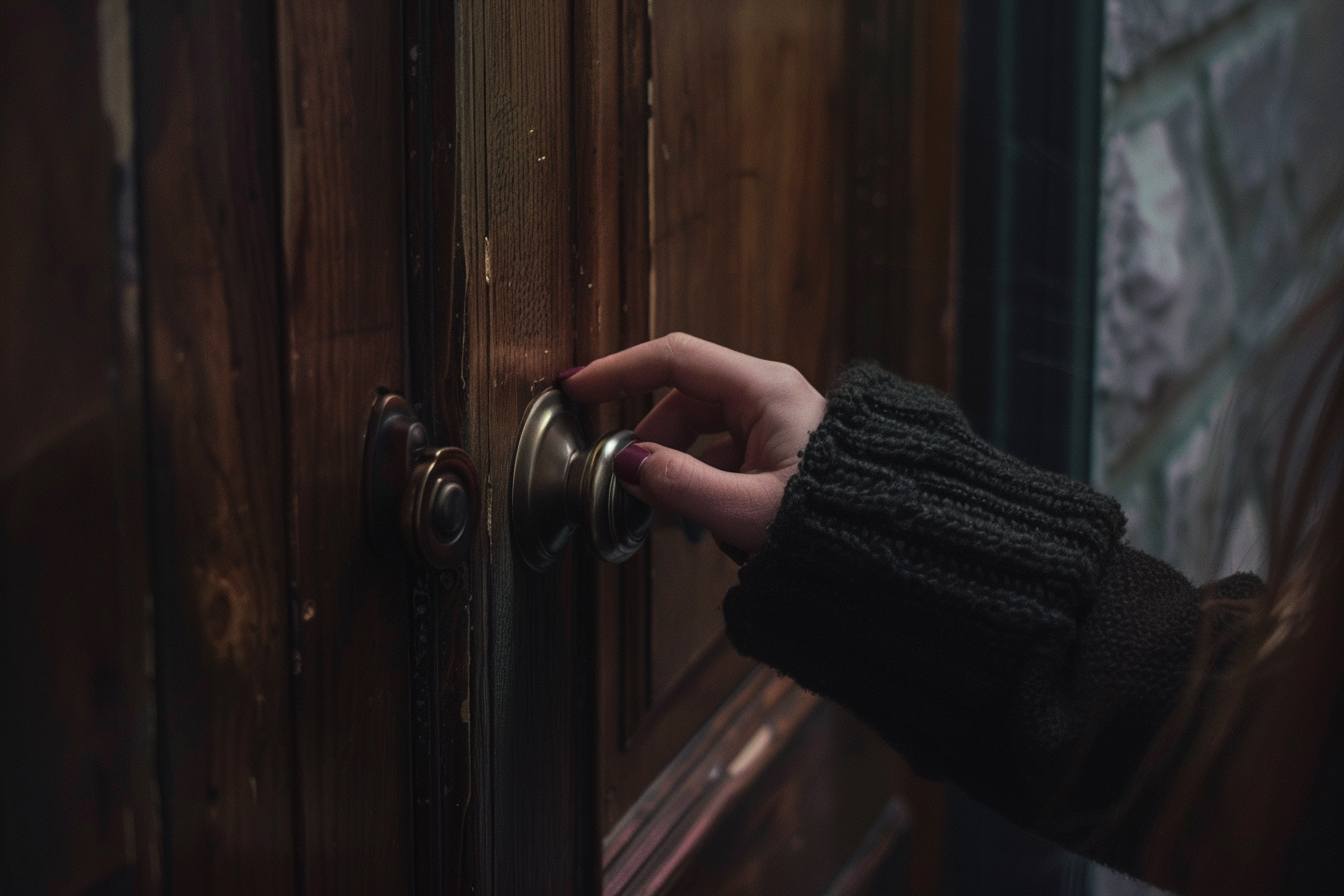
A mão de uma mulher na maçaneta da porta | Fonte: Midjourney
A visão que me saudou na sala de estar me deixou sem palavras. A sala inteira estava cheia de rosas, e um enorme coração feito de pétalas estava no chão.
E ali, no centro de tudo, estava Stan.
Mas esse não era o Stan que eu conhecia. Acabaram-se os jeans e as camisetas confortáveis que eu dei a ele.
Em vez disso, ele estava vestido com um smoking preto elegante que parecia custar mais do que meu aluguel mensal. E em sua mão, ele segurava uma pequena caixa de veludo.

Um homem de pé em uma sala de estar | Fonte: Midjourney
“Stan?”, consegui gritar. “O que está acontecendo?”
Ele sorriu e eu juro que meu coração disparou.
“Miley”, ele disse. “Eu queria agradecer por me aceitar. Você me fez incrivelmente feliz. Eu ficaria ainda mais feliz se você realmente me amasse e se tornasse minha esposa, não apenas no nome, mas na vida real. Eu me apaixonei por você no momento em que te vi, e este último mês que passamos juntos foi o mais feliz da minha vida. Você quer se casar comigo? De verdade desta vez?”
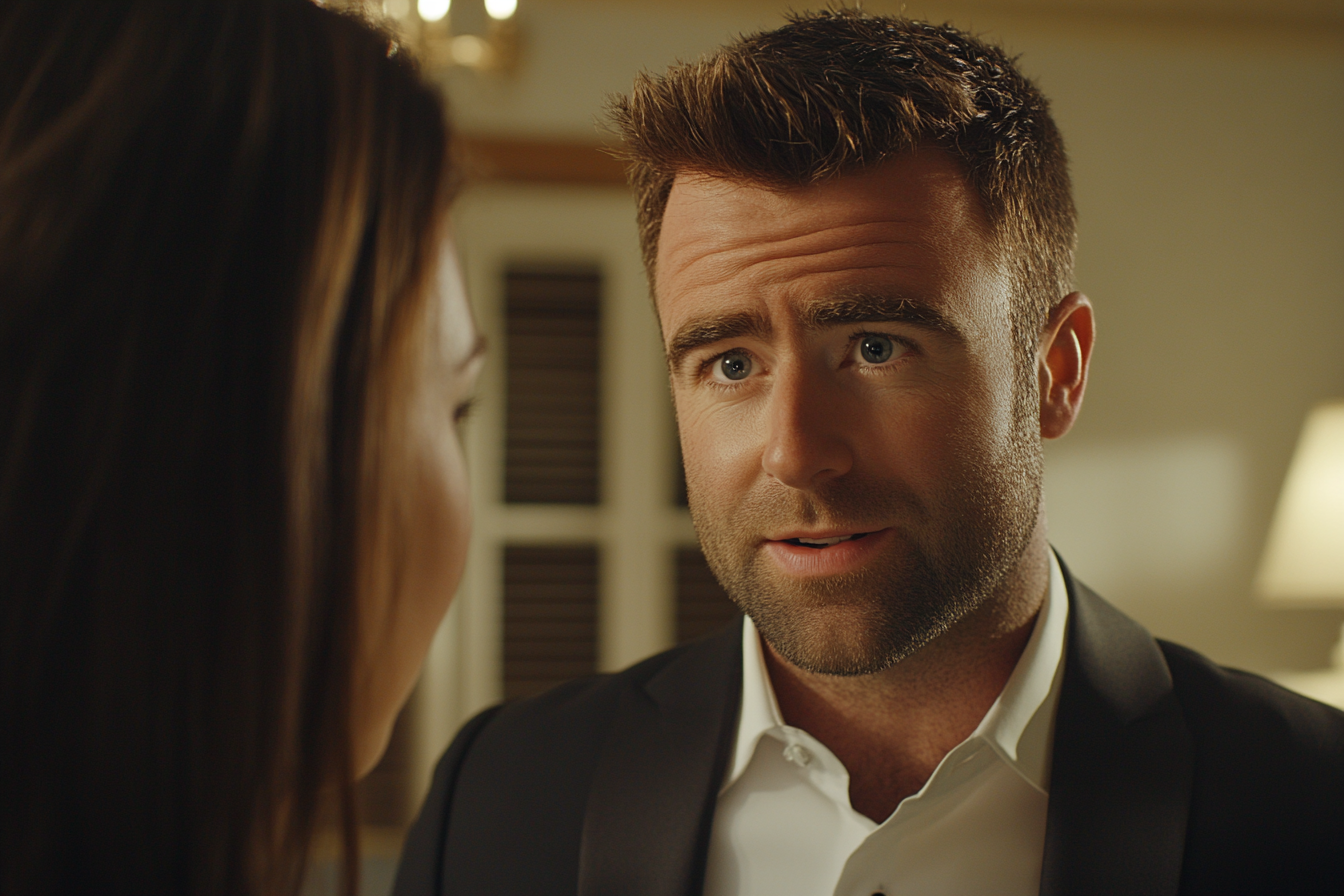
Um homem conversando com sua esposa | Fonte: Midjourney
Fiquei ali com os olhos bem abertos, lutando para processar o que estava acontecendo. Mil perguntas correram pela minha mente, mas uma abriu caminho para a frente.
“Stan”, eu disse lentamente, “onde você conseguiu o dinheiro para tudo isso? O smoking, as flores e aquele anel?”
“Acho que é hora de eu te contar a verdade”, ele disse antes de respirar fundo. “Veja bem, eu nunca te contei como fiquei sem-teto porque era muito complicado, e poderia ter te colocado em uma posição difícil. E eu amava muito nossa vida juntos.”
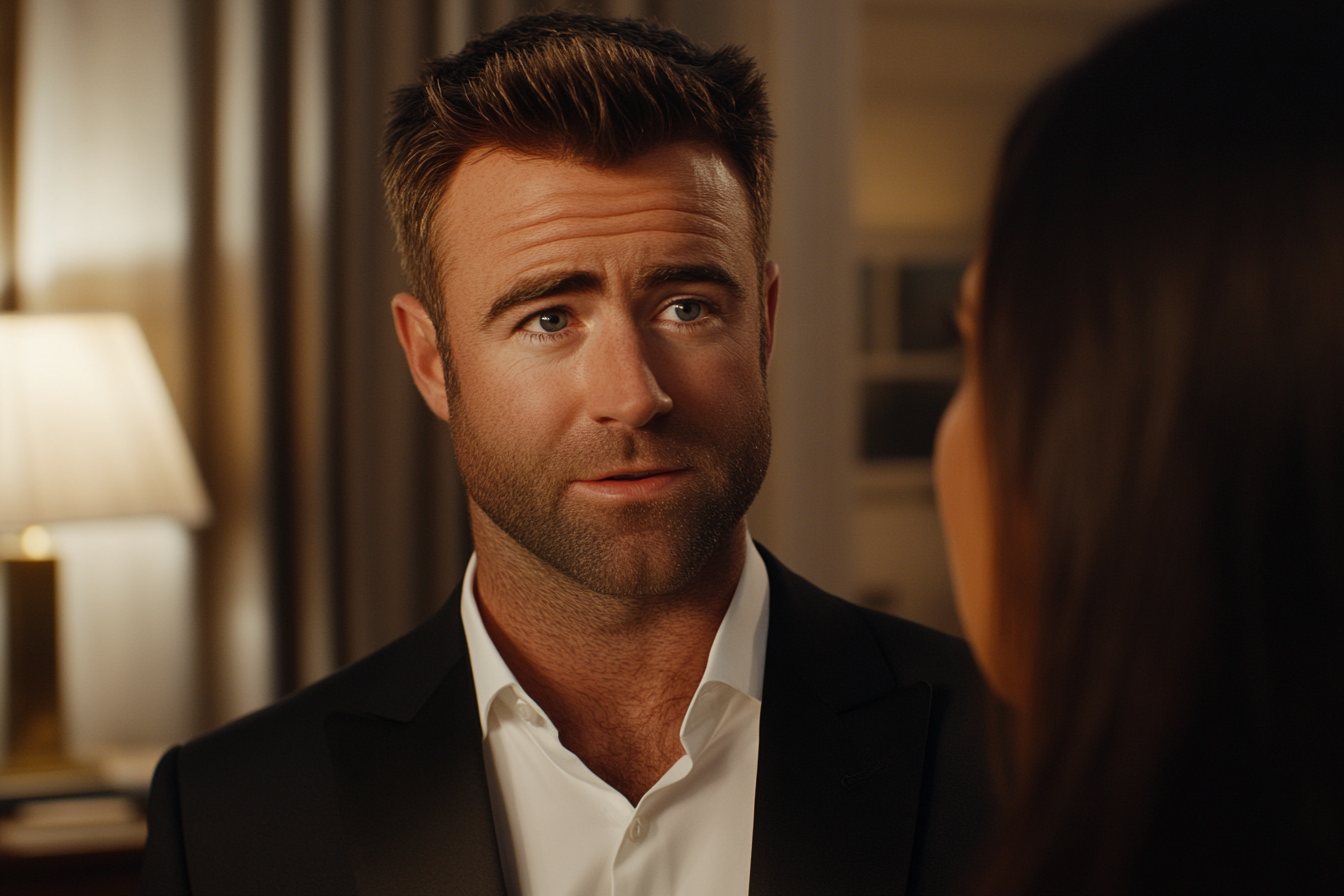
Um homem conversando com sua esposa na sala de estar | Fonte: Midjourney
“Fiquei sem-teto porque meus irmãos decidiram se livrar de mim e assumir minha empresa”, ele continuou. “Eles falsificaram documentos, falsificaram minhas assinaturas e até roubaram minha identidade. Um dia, eles me deixaram nesta cidade, a quilômetros de casa. Quando tentei ir à polícia, eles puxaram os pauzinhos e nunca obtive ajuda. Eles até subornaram meu advogado.”
Ouvi em silêncio enquanto Stan contava sua história.

Uma mulher olhando para o marido | Fonte: Midjourney
Como ele perdeu tudo, como passou meses apenas tentando sobreviver nas ruas. E então, como me conhecer lhe deu o empurrão que precisava para lutar.
“Quando você me deu uma casa, roupas limpas e um pouco de dinheiro, decidi revidar”, ele explicou. “Entrei em contato com o melhor escritório de advocacia do país, um que meus irmãos não podiam influenciar porque trabalha para os concorrentes deles.”

Um homem falando ao telefone | Fonte: Pexels
“Contei a eles minha história e prometi um pagamento substancial”, ele revelou. “No começo, eles não queriam aceitar o caso sem um adiantamento, mas quando perceberam que finalmente poderiam ser mais espertos que seus rivais, eles concordaram. Graças a eles, um processo judicial está marcado para o mês que vem, e meus documentos e contas bancárias foram restaurados.”
Ele fez uma pausa e olhou para mim com aqueles olhos gentis que a princípio chamaram minha atenção.
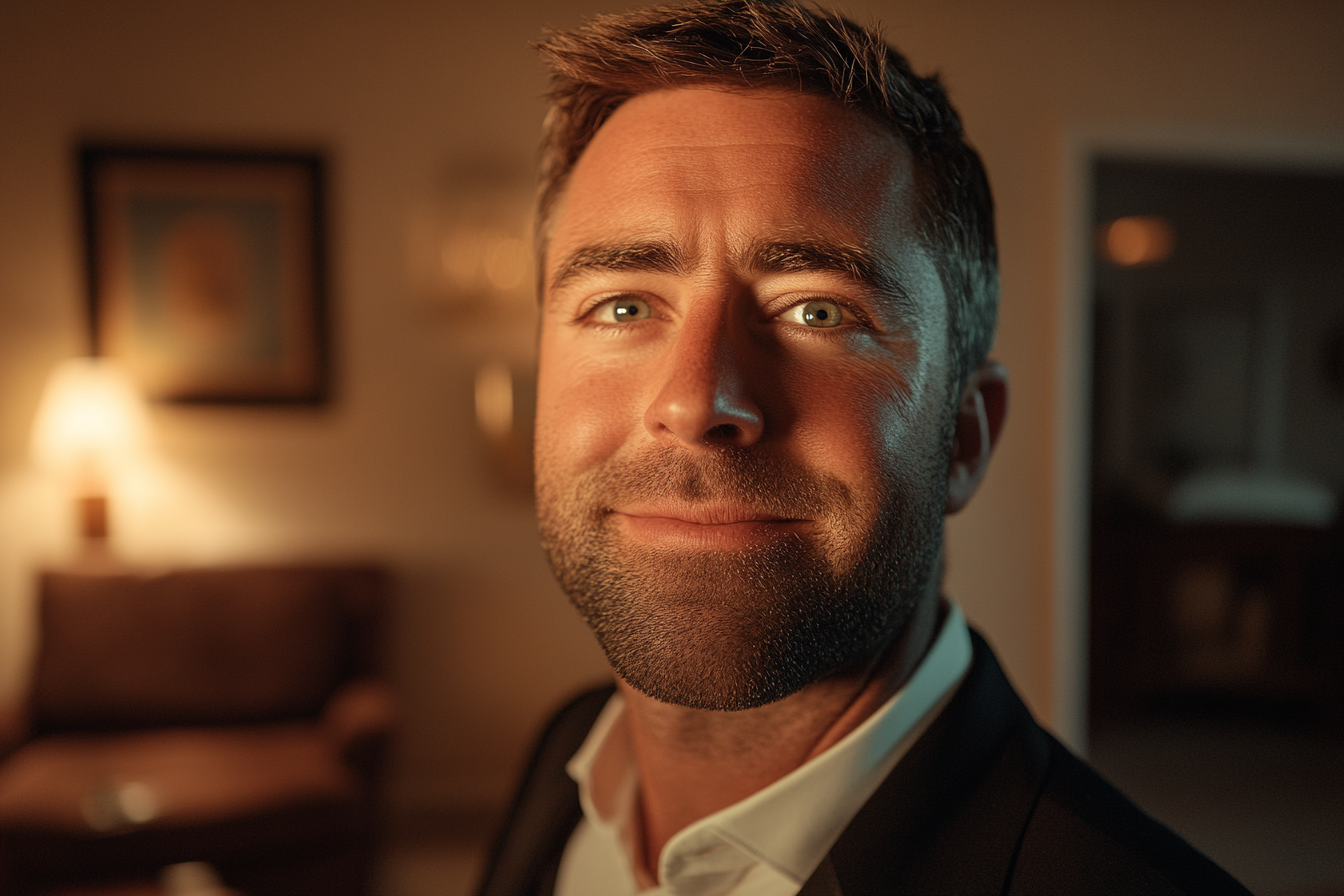
Um homem olhando para frente | Fonte: Midjourney
“Vou ser honesto com você”, ele sorriu. “Não sou um homem pobre. Passei a vida inteira procurando por amor, mas toda mulher que conheci só estava interessada no meu dinheiro. Você, no entanto, foi gentil comigo quando pensou que eu não tinha nada. É por isso que me apaixonei por você. Sinto muito por ter escondido tudo isso de você por tanto tempo.”
Afundei no sofá, incapaz de processar sua história. Eu não conseguia acreditar que o homem com quem me casei por capricho era realmente rico e nutria sentimentos genuínos por mim.

Uma mulher sentada em um sofá | Fonte: Midjourney
“Stan”, finalmente consegui dizer, “você realmente me pegou de surpresa. Sinto que também tenho sentimentos por você, mas todas essas novas informações são avassaladoras.”
Ele assentiu compreensivamente e me guiou até a mesa de jantar. Comemos o jantar que ele havia preparado.
Compartilhei meus sentimentos com Stan quando terminamos de comer.
“Stan, obrigada por um gesto tão romântico. Ninguém nunca fez algo assim por mim na minha vida.” Senti uma lágrima rolar pela minha bochecha enquanto eu falava.

Uma mulher conversando com o marido | Fonte: Midjourney
“Eu vou me casar com você. Essa é minha decisão agora. Mas você poderia me pedir de novo em seis meses? Se minha decisão permanecer a mesma, teremos um casamento de verdade. Vamos primeiro ver como a vida vai com todas essas novas informações para nós dois. Você tem uma batalha judicial difícil pela frente, e eu vou te apoiar nisso.”
O rosto de Stan se iluminou com um sorriso. “Estou tão feliz. Claro, vou te pedir de novo em seis meses. Mas você aceita meu anel agora?”

Um anel em uma caixa | Fonte: Pexels
Eu assenti, e ele colocou o anel no meu dedo. Nós nos abraçamos, e pela primeira vez, nos beijamos. Não foi um beijo de Hollywood com fogos de artifício e música crescente, mas pareceu certo. Foi como voltar para casa.
Enquanto escrevo isso, ainda estou tentando entender tudo o que aconteceu. Casei-me com um morador de rua para irritar meus pais, apenas para descobrir que ele é, na verdade, um rico empresário com um coração de ouro. A vida realmente funciona de maneiras misteriosas.

Um casal de mãos dadas | Fonte: Midjourney
Se você gostou de ler esta história, aqui está outra que você pode gostar: Quando um homem rico zomba cruelmente de uma mulher idosa após um pequeno acidente, ninguém ousa intervir — até que Mark, um homem sem-teto, se apresenta, exigindo respeito. O homem rico zomba da aparência de Mark, mas no dia seguinte, o destino inverte o roteiro, e ele está de joelhos implorando por perdão.
Este trabalho é inspirado em eventos e pessoas reais, mas foi ficcionalizado para fins criativos. Nomes, personagens e detalhes foram alterados para proteger a privacidade e melhorar a narrativa. Qualquer semelhança com pessoas reais, vivas ou mortas, ou eventos reais é mera coincidência e não intencional do autor.
O autor e a editora não fazem nenhuma reivindicação quanto à precisão dos eventos ou à representação dos personagens e não são responsáveis por nenhuma interpretação errônea. Esta história é fornecida “como está”, e quaisquer opiniões expressas são as dos personagens e não refletem as opiniões do autor ou da editora.



Leave a Reply